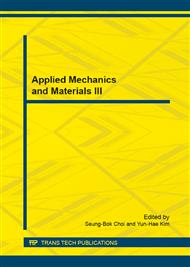p.660
p.664
p.670
p.674
p.680
p.684
p.690
p.697
p.701
A New Kind of Material for HPLC – Dioscin-Bonded Silica Gel Stationary Phase
Abstract:
A new dioscin-bonded silica gel stationary phase with natural active ingredient for high performance liquid chromatography was prepared by one-pot reaction method, using 1,6-diisocyanate as the spacer arm. The structure of new stationary phase was characterized by solid-state NMR techniques, infrared spectroscopy, elemental analysis, thermogravimetric analysis and scanning electron microscope. These results show that the dioscin has been bonded to the silicia gel. The resulting stationary phase containes 127.6 μmol/g dioscin ligand. The chromatographic performance of this new stationary phase was evaluated by different kinds of solute probes. The results illustrate that the new stationary phase has a typical reversed phase chromatographic property, meanwhile it could present various interactions with solutes. The HPLC fingerprint of PNS(Panax Notoginseng saponins) API(active pharmaceutical ingredient) on the dioscin-bonded silica gel stationary phase was established. The mobile phase was consisted of gradient acetonitrile and water. The detection wavelength was 203 nm, the column temperature was maintained at 35 degrees Celsius, the flow rate was 0.8ml/min and the injection volumn was 15 μL. The contents of the 5 co-possessing components were determined simultaneously. A new material for HPLC was made by natural product. The using of dioscin-bonded silica gel stationary phase provides a new idea in natural products research.
Info:
Periodical:
Pages:
680-683
Citation:
Online since:
January 2015
Authors:
Price:
Сopyright:
© 2015 Trans Tech Publications Ltd. All Rights Reserved
Share:
Citation:


